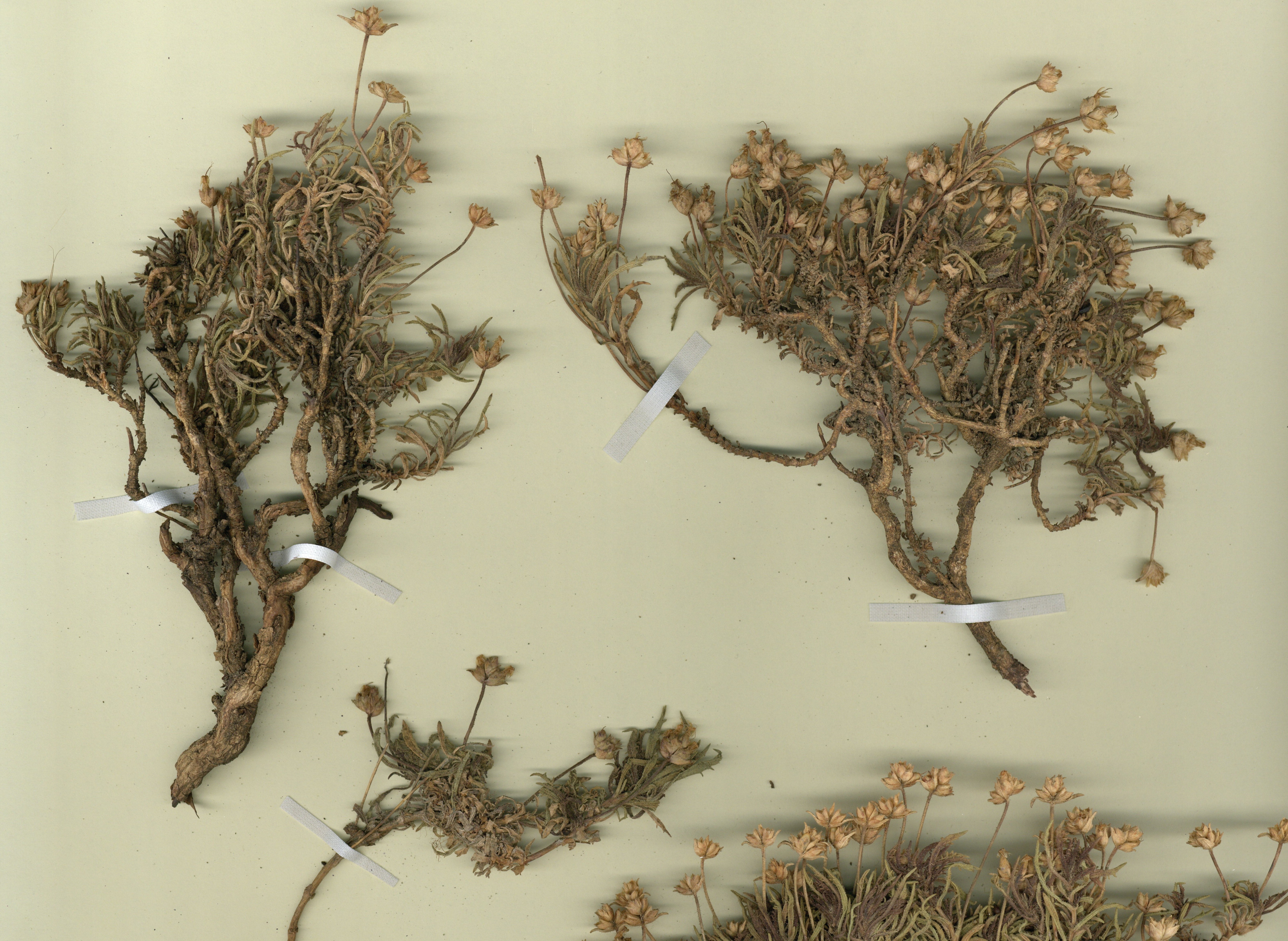Lectotipificación del nombre Plantago asperrima Gand. ex Hervier (Plantaginaceae), un endemismo del sur de la Península Ibérica
DOI:
https://doi.org/10.24310/abm.49.2024.19345Keywords:
lectotype, nomenclature, endemism, Andalusia, Spain, chorologyAbstract
The typification of Plantago asperrima is discussed from the consultation of the protologue and the original material preserved in several herbaria. For the lectotypification of the name, a specimen from J. M. Gandoger’s own collection deposited in the herbarium of Claude Bernard University of Lyon is chosen. Some aspects on the chorology of this plant and its occurrence beyond northeastern Andalusia are also discussed.
Downloads
Metrics
References
Bolòs, O. & Vigo, J. (1983). Notes sobre taxonomía i nomenclatura de les plantes, II. Collectanea Botanica, 14, 89-103.
Devesa, J.A. & Martínez-Sagarra, G. (2023). Plantas vasculares endémicas de Andalucía. Villa del Río, Córdoba: MG Marketing. https://doi.org/10.20350/digitalCSIC/15691
Gandoger, M. (1890). Flora Europaea. T. 19. Paris : F. Savy.
Gandoger, M. (1917). Catalogue des plantes récoltées en Espagne et en Portugal. Paris: Hermann, L’Homme, Masson.
Gonçalves, S. & Romano, A. (2016). The medicinal potential of plants from the genus Plantago (Plantaginaceae). Industrial Crops and Products, 83, 213-226. doi: https://doi.org/10.1016/j.indcrop.2015.12.038
Haddadian, K., Katayoon, H. & Mohsen, Z. (2014). A review of Plantago plant. Indian Journal of Traditional Knowledge,13(4), 681-685.
Hassemer, G., Bruun-Lund, S., Shipunov, A., Briggs, B.G., Meudt, H.M. & Rønsted, N.A.H. (2019). The application of high- throughput sequencing for taxonomy: The case of Plantago subg. Plantago (Plantaginaceae). Molecular Phylogenetics and Evolution, 138, 156–173. doi: https://doi.org/10.1016/j.ympev.2019.05.013
Hervier, J. (1905). Excursions botaniques de M. Elisée Reverchon. Bulletin de l'Académie internationale de Géographie Botanique, 15 (189/190), 157-170.
Hoggard, R.K., Kores, P.J., Molvray, M., Hoggard, G.D. & Broughton, D.A. (2003). Molecular systematics and biogeography of the amphibious genus Littorella (Plantaginaceae). American Journal of Botany, 90, 429-435. doi: https://doi.org/10.3732/ajb.90.3.429
Holub, J. (1977). New Names in Phanerogamae 5. Folia Geobotanica & Phytotaxonomica, 12(3), 293-311.
Lacaita, C. (1929). La Sierra de Cazorla et les Excursions d’Elisée Reverchon. Bulletin de l'Académie internationale de Géographie Botanique, ser. 2, 21, 120-134.
Losa, M. (1963). Los "Plantagos" españoles. Anales Jardín Botanico Madrid, 20, 5-50.
Pau, C. (1891). Reparos a las observaciones hechas en Peñagolosa por los botánicos. Congreso Médico-farmacéutico regional valenciano, 2º ses., 30(VII), 349-356.
Pedrol, J. (2009). Plantago L. In C. Benedi, E. Rico, J. Güemes & A. Herrero (Eds.), Flora Iberica, 13, 4–38. Madrid: Real Jardín Botánico, CSIC.
Rahn, K. (1996). A phylogenetic study of the Plantaginaceae. Botanical Journal of the Linnean Society, 120, 145-198. https://doi.org/10.1111/j.1095-8339.1996.tb00484.x
Rønsted, N., Chase, M., Albach, D. & Bello Gutierrez, M. (2002). Phylogenetic relationships within Plantago (Plantaginaceae): Evidence from nuclear ribosomal ITS and plastid trnL-F sequence data. Botanical Journal of the Linnean Society, 139, 323-338. doi: https://doi.org/10.1046/j.1095-8339.2002.00070.x
Rønsted, N., Franzyk, H., Mølgaard, P., Jaroszewski, J.W. & Jensen, S.R. (2003). Chemotaxonomy and Evolution of Plantago L. Plant Systematics and Evolution, 242, 63–82. doi: https://doi.org/10.1007/s00606-003-0057-3
Shipunov, A., Fernández-Alonso, J., Hassemer, H., Alp, S., Lee, H. & Pay, K. (2021). Molecular and Morphological Data Improve the Classification of Plantagineae (Lamiales). Plants, 10 (11), 2299. doi: https://doi.org/10.3390/plants10112299
Socorro, O., Arrebola, M.L. & Espinar, M.C. (1993). Contribuciones al conocimiento de la flora de granada. Nota IV. Lagascalia, 17(1), 185-197.
Thiers, B. (2024). Index Herbariorum: a global directory of public herbaria and associated staff. New York Botanical Garden’s Virtual Herbarium. Consultado en Julio de 2024: http://sweetgum.nybg.org/science/ih
Turland, N.J., Wiersema, J.H., Barrie, F.R., Greuter, W., Hawksworth, D.L., Herendeen, P.S., Knapp, S., Kusber, W.-H., Li, D.-Z., Marhold, K., May, T.W., McNeill, J., Monro, A.M., Prado, J., Price, M.J. & Smith, G.F. (Eds.) (2018). International Code of Nomenclature for algae, fungi, and plants (Shenzhen Code) adopted by the Nineteenth International Botanical Congress Shenzhen, China, July 2017. Regnum Veg. 159. Glashütten: Koeltz Botanical Books. doi: https://doi.org/10.12705/Code.2018
Vogt, R., Lack, H.W. & Raus, T. (2018). The herbarium of Ignaz Dörfler in Berlin [De herbario berolinensi notulae No. 55]. Willdenowia 48, 57-92. doi: https://doi.org/10.3372/wi.48.48105
Vigo, J. (1968) La vegetació del massís de Penyagolosa. Barcelona: Institut D´Estudis Catalans.
Weryszko-Chmielewska, E., A. Matysik-Woźniak, A. Sulborska & R. Rejdak (2012). Commercially important properties of plants of the genus Plantago. Acta Agrobotanica, 65(1): 11-20. doi: https://doi.org/10.5586/aa.2012.038
Wiersema, J.H., Turland, N.J., Barrie, F.R., Greuter, W., Hawksworth, D.L., Herendeen, P.S., Knapp, S., Kusber, W.-H., Li, D.-Z., Marhold, K., May, T.W., McNeill, J., Monro, A.M., Prado, J., Price, M.J. & Smith, G.F. (Eds.) (2018+) [continuously updated]. International Code of Nomenclature for algae, fungi, and plants (Shenzhen Code) adopted by the Nineteenth International Botanical Congress Shenzhen, China, July 2017: Appendices I-VII. Consultado el 18 de enero de 2024: https://naturalhistory2.si.edu/botany/codes-proposals/

Downloads
Published
How to Cite
Issue
Section
License
Copyright (c) 2024 Acta Botanica Malacitana

This work is licensed under a Creative Commons Attribution-NonCommercial-ShareAlike 4.0 International License.
All information related to the licensing of published works in Acta Botanica Malacitana and copyright can be found in our Editorial Policy.






1.png)
